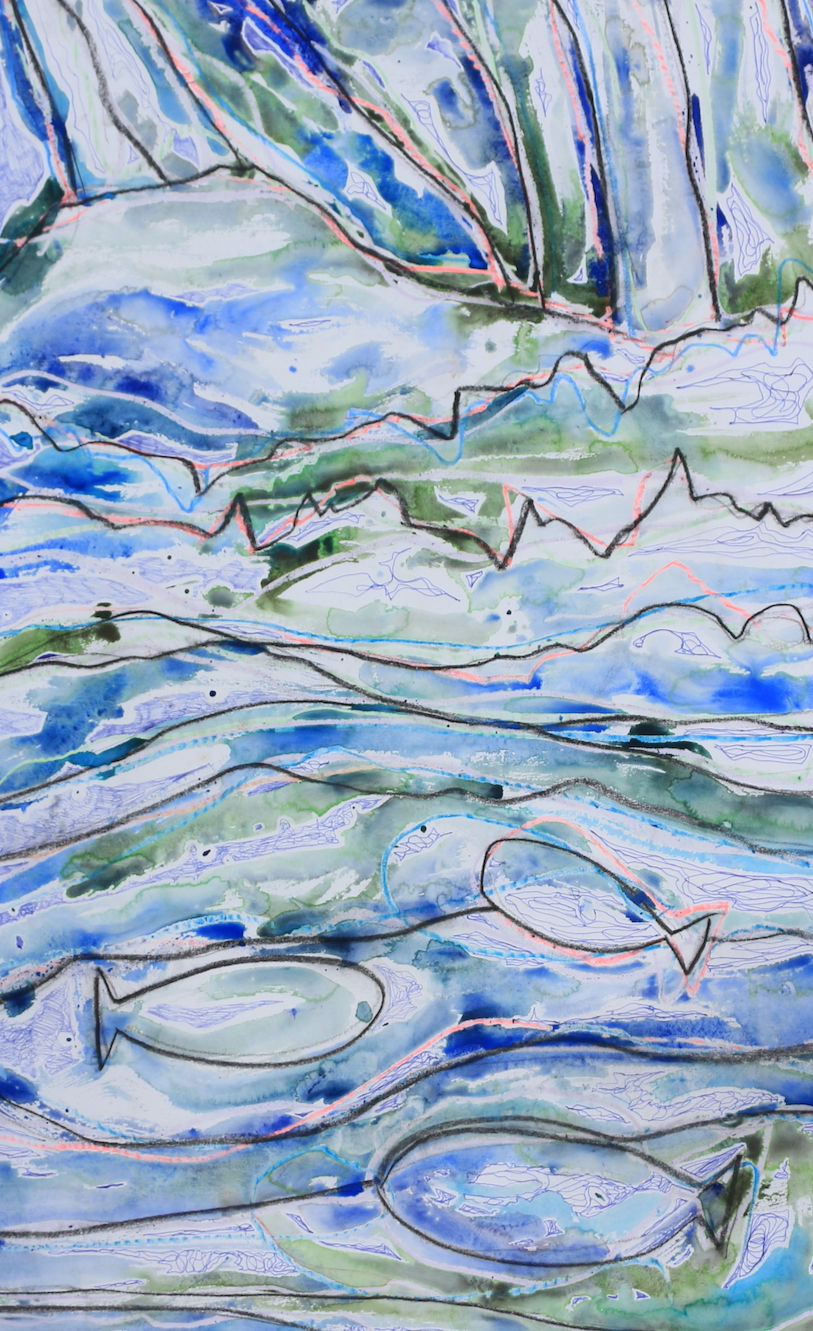
_JPG.jpg)
Bio
Casey Murano is an aspiring artist-minister-theologian who creates experimental drawings and practices of pilgrimage. After earning a B.A. in Visual and Media Arts Practice from the University of Richmond, she participated in a year of service with the St. Joseph Worker Program in St. Paul, Minnesota. She then lived for three years at Bethlehem Farm, an intentional Catholic community in Appalachia. She leads drawing workshops on themes of pilgrimage and has been accepted to art residencies with the MidMountain Collective and Grünewald Guild. She currently lives in the Blue Ridge Mountains of southwest Virginia.
Statement
I primarily work with fragments of paper and ephemera to create drawings that flow from contemplative practices and a posture of pilgrimage. Working definitions for these two terms: Contemplation is cultivating spaciousness and engaging each moment with deep awareness, which for me includes walking, writing, swimming, and drawing; listening, looking, and reflecting. Pilgrimage is intentionally embarking on a journey of transformation, often connected to a place or process that holds significant meaning. The drawings that emerge from these practices, catalyzed by daily experiences of pilgrimage, are generally fragmentary, cyclical, and curious about the relationship between spirituality and abstraction.
Starting from my particular position within the Catholic tradition and expanding beyond, I explore theological concepts and practices such as pilgrimage and contemplation. I want to know the possibilities and limits of such concepts in responding to the complex, systemic challenges of our time. I also want to know how contemplative creative practices and a posture of pilgrimage can enable the personal and collective transformation necessary for dismantling systems of oppression and recovering a posture of care, reverence, and wonder in the particular spaces we inhabit.
Interdisciplinary artist and writer Deborah J. Hayne’s “theology of the arts” is a conceptual framework that resonates with my creative practice. Like Haynes, who is trained as both a studio artist and theologian, I am drawn to “the revelatory, the prophetic, and sacramental potential of the arts.” Grounded in this framework, I look to artists within my religious lineage who model an integration of art and spirituality, such as Corita Kent, Ade Bethune, and Hildegarde of Bingen. I also look to artists like Hilma af Klint, Dorothea Rockburne, Georgia O’Keeffe, Loie Hollowell, Howardena Pindell, and Agnes Martin who explore connections between spirituality and abstraction.
Commitment to a theology of the arts, contemplative practices, and spirit of pilgrimage leads me across disciplines and methodologies, through theory and praxis; and towards an embeddedness in place, participation in community, and practice of presence. The journey increasingly reveals parallels between the creative process and contemplative life—being comfortable with unknowing, paradox, and letting go.